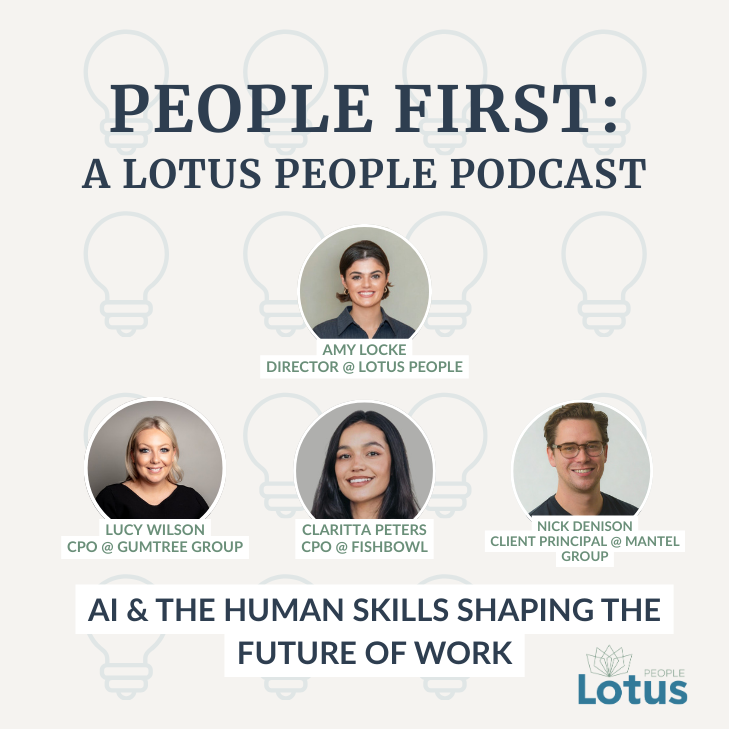Lotus People: LIVE had another amazing webinar last 14th October where we welcomed 200+ attendees to discuss the benefits of employee retention, mental health, maximising team engagement, and the up-to-date market intel on the recruitment landscape, courtesy of LinkedIn. With our stellar panel sharing insights, we came away with a long list of the best talent acquisition strategies that recruiters, HR managers, and organisational leaders can implement today.
The webinar kicked off with Mark Freeman, LinkedIn’s Head of Enterprise Staffing, sharing that for employees to stay happy in their roles, there needs to be a consistent transformation within their careers within a business. Essentially, driving a culture that’s rooted in ongoing growth and development will result in people being genuinely happy in their jobs. We learned how candidate behaviours have changed and that the recruitment landscape in Australia is an extremely different one to 2019.
Emma Trehy, People Manager APAC at Contino continued to build on this by emphasising the importance of leading with empathy. In this current working world, it is a requirement of all leaders to ensure that they have a happy and engaged team. Further supported by Black Dog Institute’s Director of People & Culture Operations, Marian Spencer, empathy directly ties in with building a mentally healthy workplace. Marian spoke about the importance of enabling employees to work with flexibility to achieve the ideal work-life balance which we heard is one of the top 3 employee motivators today.
The list of what we took away from this webinar was long! But here are a few takeaways that were our standouts;
1. Understand your employee demographic – Retention tactics are different for each demographic. It’s important to know who your employees are and to understand them and what they value in order to continuously build a growing, productive, engaged workplace.
2. Focus on talent mobility – Play to people’s strengths to make sure that they are consistently growing in their roles and are able to further their careers with their specialties.
3. Catch burnout before it’s too late – Avoiding employee burnouts is essential for productivity and a healthy workforce. One way to do this is by making sure that managers are equipped and knowledgeable in identifying early signs of burnout and the organisation has a strong mental health policy in place.
4. Work–life balance is key. Try to promote destressing strategies in the workplace through mindfulness, meditation or yoga classes to help with stress reduction. This will result in less burnout, a more motivated team, and lower attrition.
Fundamentally, as with everything, retention and engagement needs to be a strategic priority that engages all leaders of every business. Once it is, your business will reap the rewards of a happy, engaged and positive workforce!
As always, a huge thank you to everyone who joined us, along with our amazing panel and, of course, the Lotus People team for promoting and sharing the webinar with their networks.
If there are any topics you want us to cover in our next webinar, let us know!
Thank you!,
The Lotus People Team
PS If you would like to catch up on the recording, reach out to us today!
You may also like...





